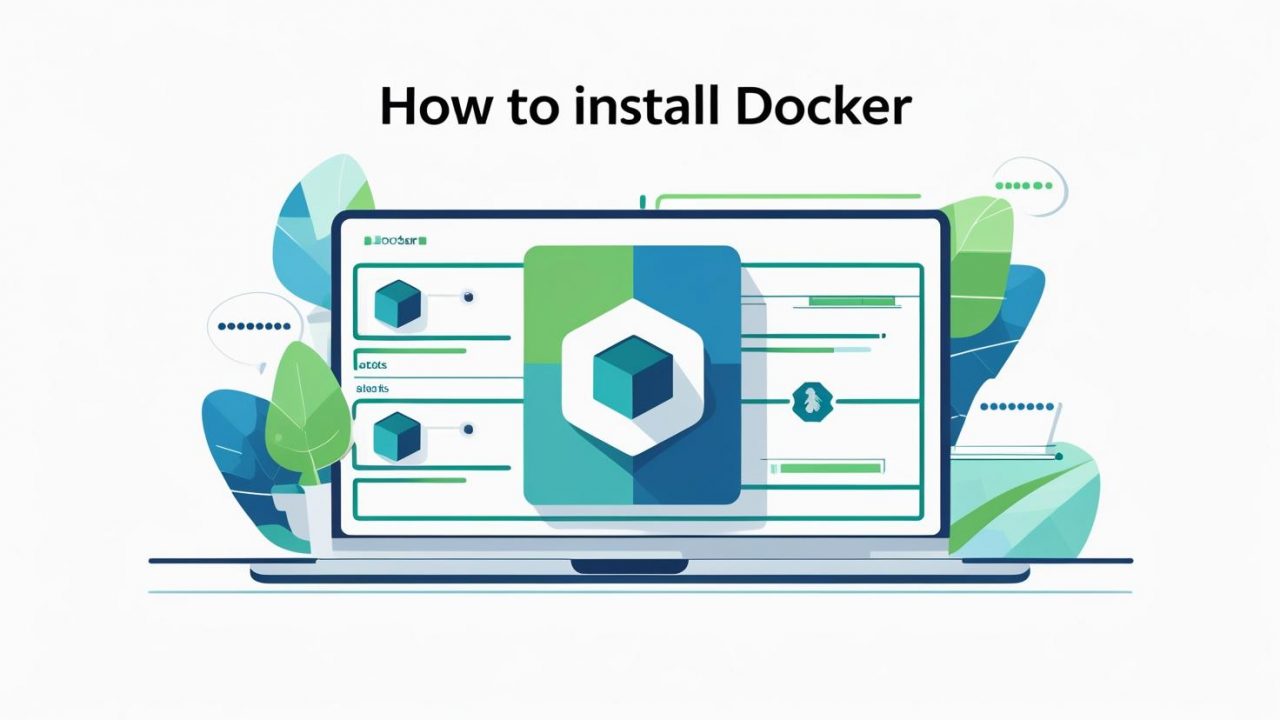How to Install Docker? A Step-by-Step Guide by OpsNexa
Docker has become a cornerstone for developers and IT teams looking to streamline their application development, deployment, and scalability processes. Whether you’re building, shipping, or running applications, Docker offers an efficient and consistent way to work with software. In this guide, we will walk you through the process of installing Docker on your system, ensuring you’re ready to start containerizing your applications.
What is Docker?
Before we dive into the installation process, let’s briefly cover what Docker is. Docker is a platform that uses containerization to allow developers to package applications and their dependencies into containers. These containers can then run consistently across any environment, from local machines to cloud servers, without worrying about inconsistencies or conflicts.
Now, let’s move on to installing Docker on various systems.
How to Install Docker on Linux (Ubuntu)
Ubuntu is one of the most commonly used Linux distributions. Here’s how you can install Docker on Ubuntu:
1. Update Your System
Start by updating your system’s package list to ensure all existing packages are up-to-date.
2. Install Required Dependencies
Docker requires some dependencies to work properly. Install them using the following command:
3. Add Docker’s Official GPG Key
Docker packages are signed to ensure authenticity. Add Docker’s GPG key to your system.
4. Add Docker Repository
Next, add Docker’s official repository to your list of apt sources.
5. Update the Package Database
After adding the Docker repository, update your package database again.
6. Install Docker
Now that everything is set up, install Docker by running:
7. Start Docker Service
Once Docker is installed, you need to start the Docker service. Run the following command:
8. Enable Docker to Start on Boot
To ensure that Docker starts automatically when the system boots, run:
9. Verify Docker Installation
Check if Docker was installed successfully by running:
You should see the installed Docker version printed in the output.
How to Install Docker on Windows
Installing Docker on Windows is straightforward, especially with Docker Desktop. Follow the steps below:
1. Download Docker Desktop for Windows
Visit Docker’s official website and download Docker Desktop for Windows:
2. Install Docker Desktop
Run the installer and follow the installation prompts. Docker Desktop requires Windows 10 Pro or Enterprise, as it uses Hyper-V for virtualization.
3. Enable WSL 2 (Windows Subsystem for Linux)
Docker Desktop relies on WSL 2, so make sure it is enabled during installation. Docker will guide you through enabling WSL 2 if it’s not already installed.
4. Restart Your System
After installation, you will be prompted to restart your system.
5. Launch Docker Desktop
Once your system has restarted, open Docker Desktop from the Start menu. Docker will start running in the background.
6. Verify Installation
Open a command prompt or PowerShell window and type:
This will verify that Docker is installed correctly.
How to Install Docker on macOS
Docker Desktop for macOS provides an easy-to-use GUI to manage Docker containers. Here’s how to install Docker on a Mac:
1. Download Docker Desktop for Mac
Go to Docker’s official website and download Docker Desktop for macOS:
2. Install Docker Desktop
Open the downloaded .dmg file and drag Docker to the Applications folder.
3. Launch Docker
Open Docker from the Applications folder. Docker will start running in the background, and you’ll see the Docker icon in the menu bar.
4. Verify Docker Installation
To verify Docker was installed correctly, open the terminal and run:
If the installation is successful, you’ll see the version of Docker installed.
How to Install Docker Using Docker-Compose (Optional)
Docker Compose is a tool for defining and running multi-container Docker applications. If you want to use Docker Compose, here’s how to install it.
1. Install Docker Compose on Linux
Run the following command to download Docker Compose:
Make the binary executable:
2. Verify Docker Compose Installation
Check the version of Docker Compose:
If the installation is successful, the version number will be displayed.
Common Docker Installation Issues and Fixes
While installing Docker is generally straightforward, some issues might arise during the process. Here are a few common problems and their solutions:
-
Permission Denied Errors
If you get permission denied errors when running Docker commands, try running the command with
sudoor adding your user to the Docker group: -
Docker Daemon Not Starting
If Docker’s service doesn’t start, try restarting the system or manually starting the service with:
-
Outdated Packages
If Docker packages are outdated, make sure your repositories are up-to-date and try reinstalling Docker.
Conclusion
Docker is a powerful tool that simplifies application deployment, scaling, and management. By using Docker, developers and IT professionals can create, test, and deploy applications in isolated environments known as containers. This ensures that the application behaves consistently across various systems and environments.
Whether you’re working on a Linux, Windows, or macOS system, installing Docker is simple and can greatly enhance your development workflow. Follow the steps in this guide to get Docker up and running and start taking advantage of its powerful features today.
For more information or assistance with Docker-related tasks, reach out to OpsNexa for expert guidance and support.
You can also Contact OpsNexa for Devops architect and devops hiring solutions.



